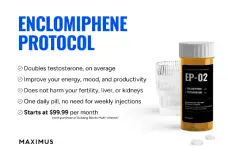Seagal
Well-Known Member
Of course I know about Fina duta possible negative effects. I tried a small dose of topical Fina few times and it always caused mood disturbances. I think your case is different, you seem to have an extreme abundance of 5-a-reductase. I would start with a really small dose. I believe that the herbal stuff is not strong enough in your case because you need to reduce DHT more than a few percentages. If you don't mind the hair redistribution then only titrating up E2 could work too.I have pumpkin seed oil and quercetin coming. After that may give saw palmetto a try. I really don't want to try fin/dut....to many horror stories with those.














